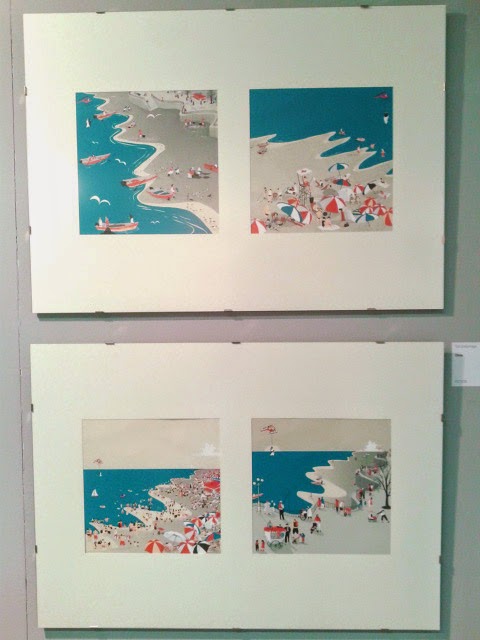The ghost dog came about one cold winter afternoon when I was sitting in the kitchen. I started writing on the 1st of December in 2011, inspired by this strange encounter and my winter observations of a snowy Lithuanian capital city. It later turned into a collection of random scenes
from the life of a lonely girl, living in a weather-beaten shed-like rooftop
flat on a high concrete building with her imaginary dog friend. The girl was originally much older than she ended up being in my picture book, with the targeted audience of 5-7 year-olds. The ghost dog underwent as much transformation, but stayed quite close to my original vision.
I took inspiration from the magic of real life, as well as Saint-Exupéry's “Little Prince” and Miyazaki's “Spirited Away”. I had anthropomorphic characters
such as Time, Winter, Wind, Darkness, Cold and Silence, which acted as secondary
characters in the background. Such concepts would be difficult to comprehend for a very young audience, so eventually they were left out from my picture book.
Three years later, I returned to this project in Cambridge, UK, where it did not snow during all winter. Disney’s “Frozen” came out at that time and I also had a pretentious Winter character, just like Snow Queen, who freezes all the buildings and brings snowstorms. My other influences included surreal and atmospheric picture books like Raymond Briggs's "Snowman", Levi Pinfold's "Black Dog" and Komako Sakai's "The Snow Day". I knew it would be challenging to develop this project since I didn’t have an actual story. Nevertheless, I felt motivated because I had worked with environment during the first semester at Cambridge School of Art. "Winter Ghost" was centered around the relationship of the main character with her bleak and cold surroundings.
Three years later, I returned to this project in Cambridge, UK, where it did not snow during all winter. Disney’s “Frozen” came out at that time and I also had a pretentious Winter character, just like Snow Queen, who freezes all the buildings and brings snowstorms. My other influences included surreal and atmospheric picture books like Raymond Briggs's "Snowman", Levi Pinfold's "Black Dog" and Komako Sakai's "The Snow Day". I knew it would be challenging to develop this project since I didn’t have an actual story. Nevertheless, I felt motivated because I had worked with environment during the first semester at Cambridge School of Art. "Winter Ghost" was centered around the relationship of the main character with her bleak and cold surroundings.
At first, I had too many characters and struggled with the
storyline. I was advised to focus on the two main characters instead. It was a big relief, but I still needed
a good story to fit into the 32-page book. Storyboards are useful when working out the plot. I made one, but there was no conflict or turning point. My heroine was stuck in a frozen
room after a snowstorm. At that point, I was kindly advised to illustrate Snow Queen instead, but I was too involved with my characters, a lonely girl with supernatural powers and her friendly ghost dog. After a winter break, it was spring already and seasonal change influenced the "Winter Ghost" narrative. The ghost dog, which now represented winter, desperately seeked shelter in the small rooftop flat at the return of spring. I made a new storyboard and small dummy books with text. You can see the different stages of my progress below.
Character development was an important part of my creative process. Contrasting characters created tension and explained the unexpected resolution of my story. The interaction between the lonely girl and the ghost dog changed during the process from a quiet friendship into an angry rejection. The unwelcome visitor scared and angered the heroine, but also encouraged her to take action.
I started exploring the emotional world of my main character. Mixed emotions add depth and realism to a fictional character. Humans are complicated beings who constantly balance their thoughts and emotions. Animals are more direct and instinctive about their responses. Small children may sometimes act like animals while they are learning to be civilized and obedient. We usually admire their sincere and exuberant reactions to life, but sometimes forget that children also have their own complex inner worlds.
The lonely girl chased away winter together with the ghost dog. Winter comes to an end, whether we like it or not, just like Briggs's Snowman, which melted away at the end. The finale of my story is open-ended. A happy-end for the lonely girl, who can finally escape her small apartment. How about the winter ghost? There is some space left for the reader's imagination to fill in.
















































